Rear Brake Caliper Replacement All Wheel Drive and GT
Removal Procedure
- Use a siphon in order to remove half of the brake fluid from the reservoir.
- Raise and support the vehicle. Refer to Lifting and Jacking the Vehicle.
- Remove the rear tire and wheel assembly. Refer to Tire and Wheel Removal and Installation.
- Place a container below the rear brake hose and the fitting (1) in order to catch the brake fluid.
- Remove the rear brake hose, the fitting, and the washer from the caliper.
- Use a wrench in order to hold the slide pins. Remove the caliper bolts (1, 2).
- Remove the caliper from the vehicle.
Warning: Refer to Brake Dust Warning in the Preface section.
Warning: Refer to Brake Fluid Irritant Warning in the Preface section.
Caution: Refer to Brake Fluid Effects on Paint and Electrical Components Caution in the Preface section.
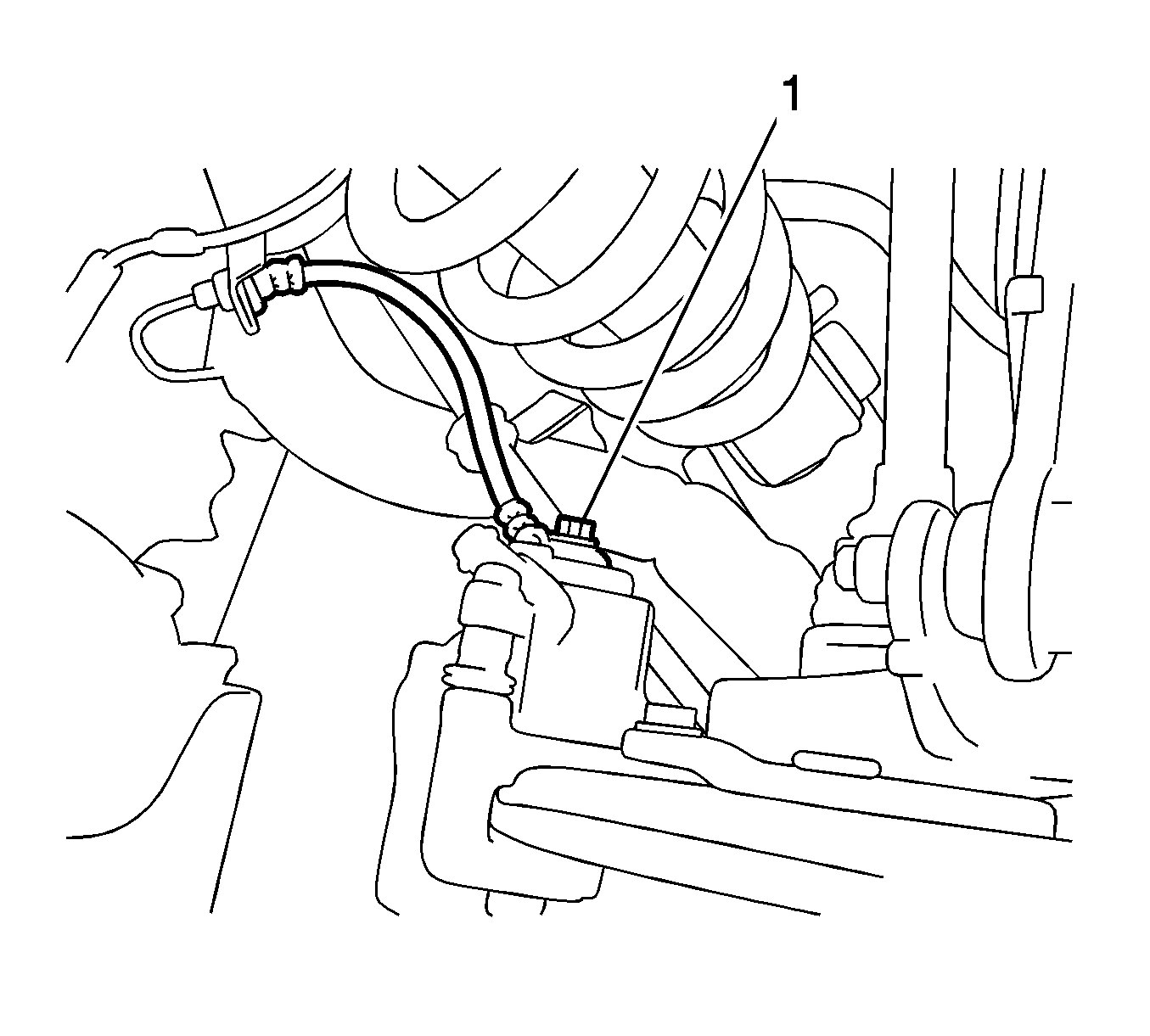
Discard the washer.
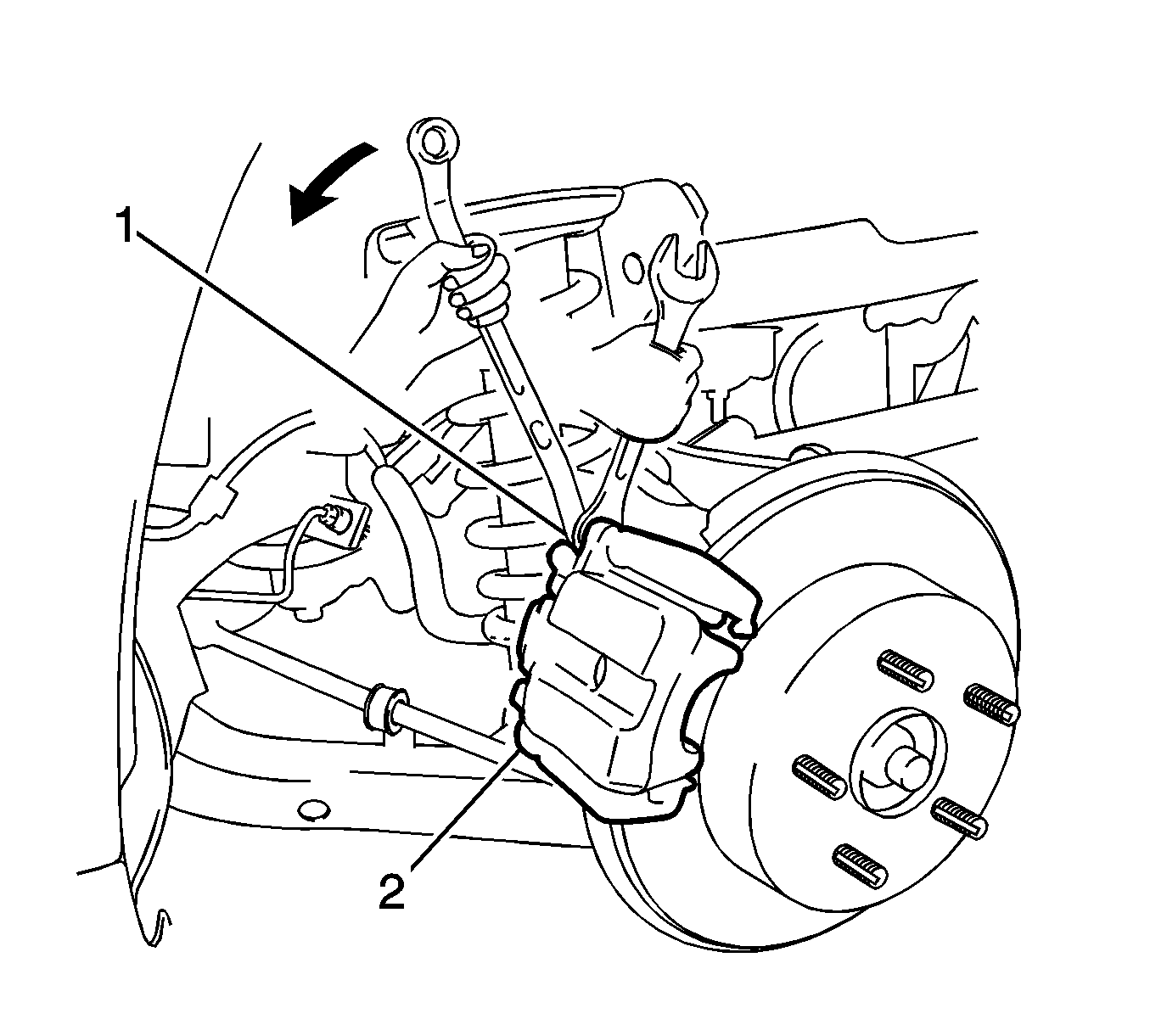
Inspection Procedure
- Clean and inspect the disc brake caliper components. Repair or replace the components as necessary. Refer to Rear Disc Brake Mounting and Hardware Inspection.
- Clean and inspect the caliper. Repair or replace the components as necessary. Refer to Brake Caliper Inspection.
Installation Procedure
- If the caliper piston is not compressed into the caliper bore, complete the following steps:
- Ensure the caliper slide pins (2, 8) are lubricated with lithium soap base glycol grease or Silicone Brake Lubricant, or equivalent. Refer to Adhesives, Fluids, Lubricants, and Sealers. If necessary, refer to Rear Disc Brake Hardware Replacement.
- Install the caliper (1) to the vehicle.
- Install the caliper bolts (9) and tighten to 27 N·m (20 lb ft).
- Install a NEW washer to the flexible hose lock hole in the caliper.
- Install the brake hose to the caliper.
- Install the brake hose fitting (1) and tighten to 33 N·m (24 lb ft).
- Install the rear tire and wheel assembly. Refer to Tire and Wheel Removal and Installation.
- Lower the vehicle.
- Fill the master cylinder reservoir. Refer to Master Cylinder Reservoir Filling.
- With the engine OFF, gradually apply and release the brake pedal several times in order to position the caliper pistons and the brake pads.
- Bleed the brake system. Refer to Hydraulic Brake System Bleeding.
| 1.1. | Wrap the handle of a hammer with tape. |
| 1.2. | Use the handle of a hammer in order to compress the caliper piston into the caliper bore. |
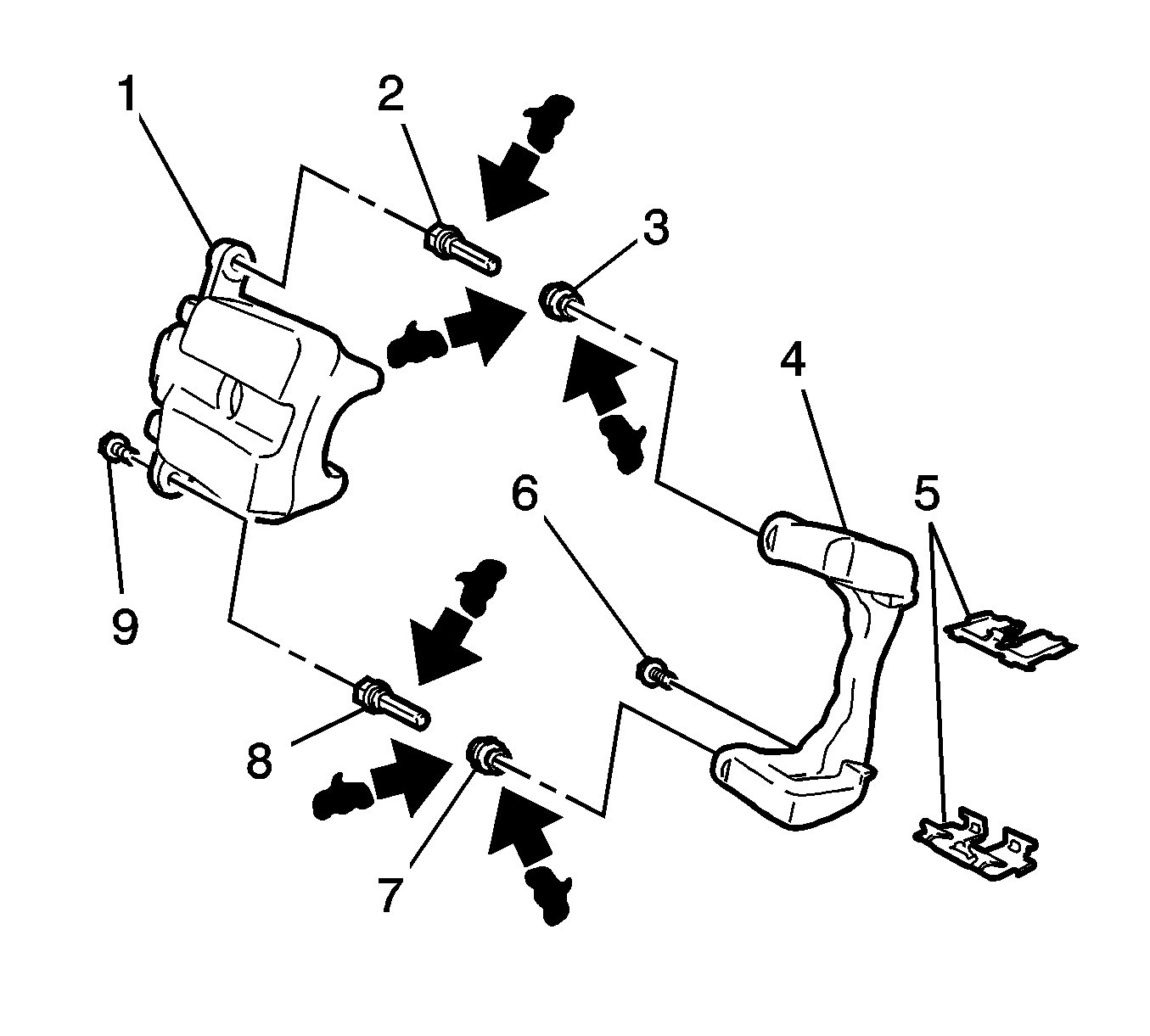
Caution: Refer to Fastener Caution in the Preface section.

Warning: Do not move the vehicle until a firm brake pedal is obtained. Failure to obtain a firm pedal before moving vehicle may result in personal injury.
Rear Brake Caliper Replacement Except All Wheel Drive and GT
Removal Procedure
- Loosen the park brake system. Refer to Parking Brake Adjustment.
- Use a siphon in order to remove half of the brake fluid from the reservoir.
- Raise and support the vehicle. Refer to Lifting and Jacking the Vehicle.
- Remove the rear tire and wheel assembly. Refer to Tire and Wheel Removal and Installation.
- Remove the park brake lever protector (1) from the rear park brake cable.
- Disengage the clamp (2) from the rear park brake cable.
- Remove the bolt (1).
- Separate the rear park brake cable (1) from the bracket on the rear brake caliper.
- Use an offset wrench (3) in order to disengage the clip (2) and separate the rear park brake cable (1) from the caliper.
- Place a container below the rear brake hose and the fitting (1) in order to catch the brake fluid.
- Remove the rear brake hose, the fitting, and the washer from the caliper.
- Use a wrench in order to hold the slide pins (2). Remove the caliper bolts (1).
- Remove the caliper from the vehicle.
Warning: Refer to Brake Dust Warning in the Preface section.
Warning: Refer to Brake Fluid Irritant Warning in the Preface section.
Caution: Refer to Brake Fluid Effects on Paint and Electrical Components Caution in the Preface section.
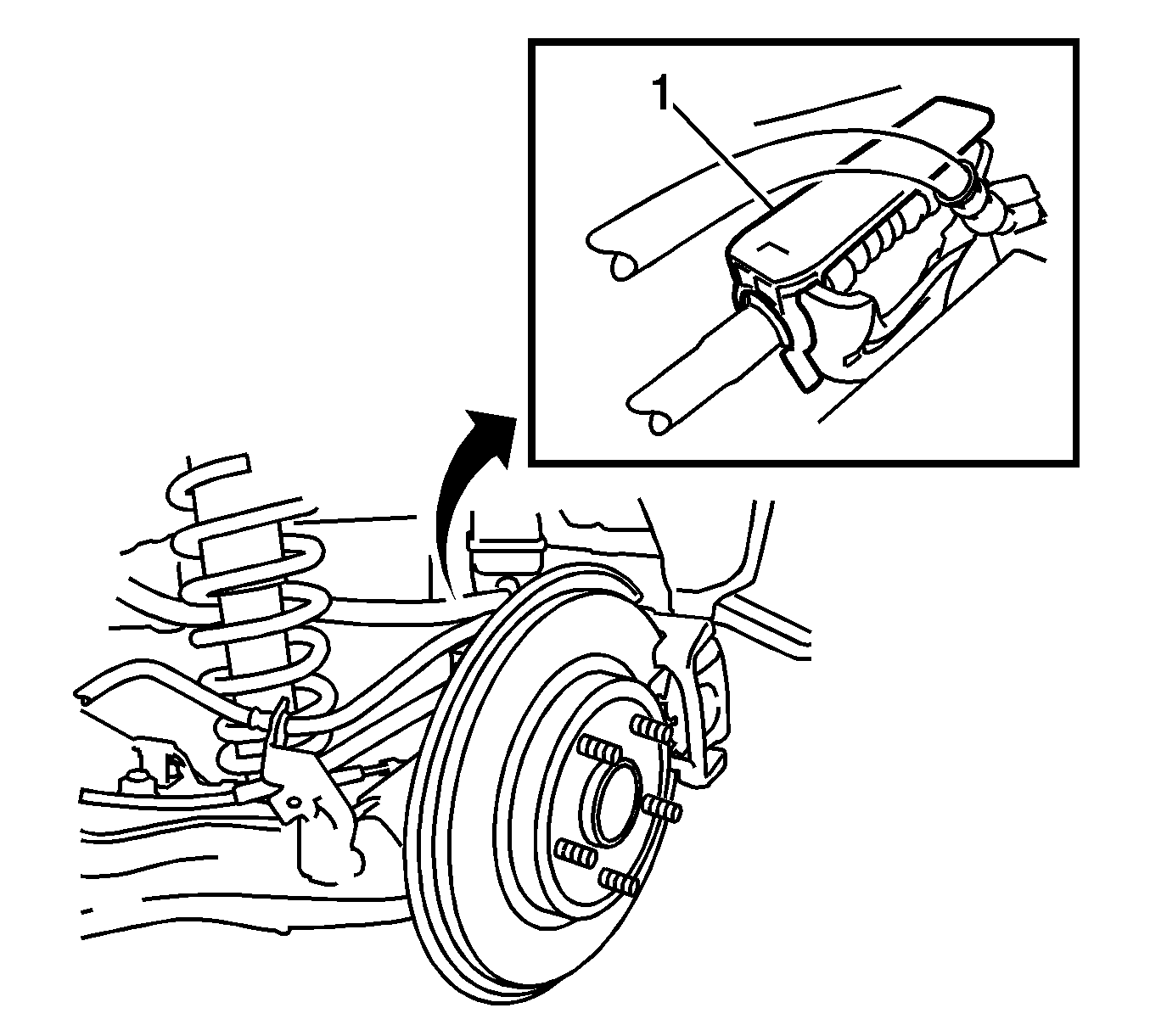
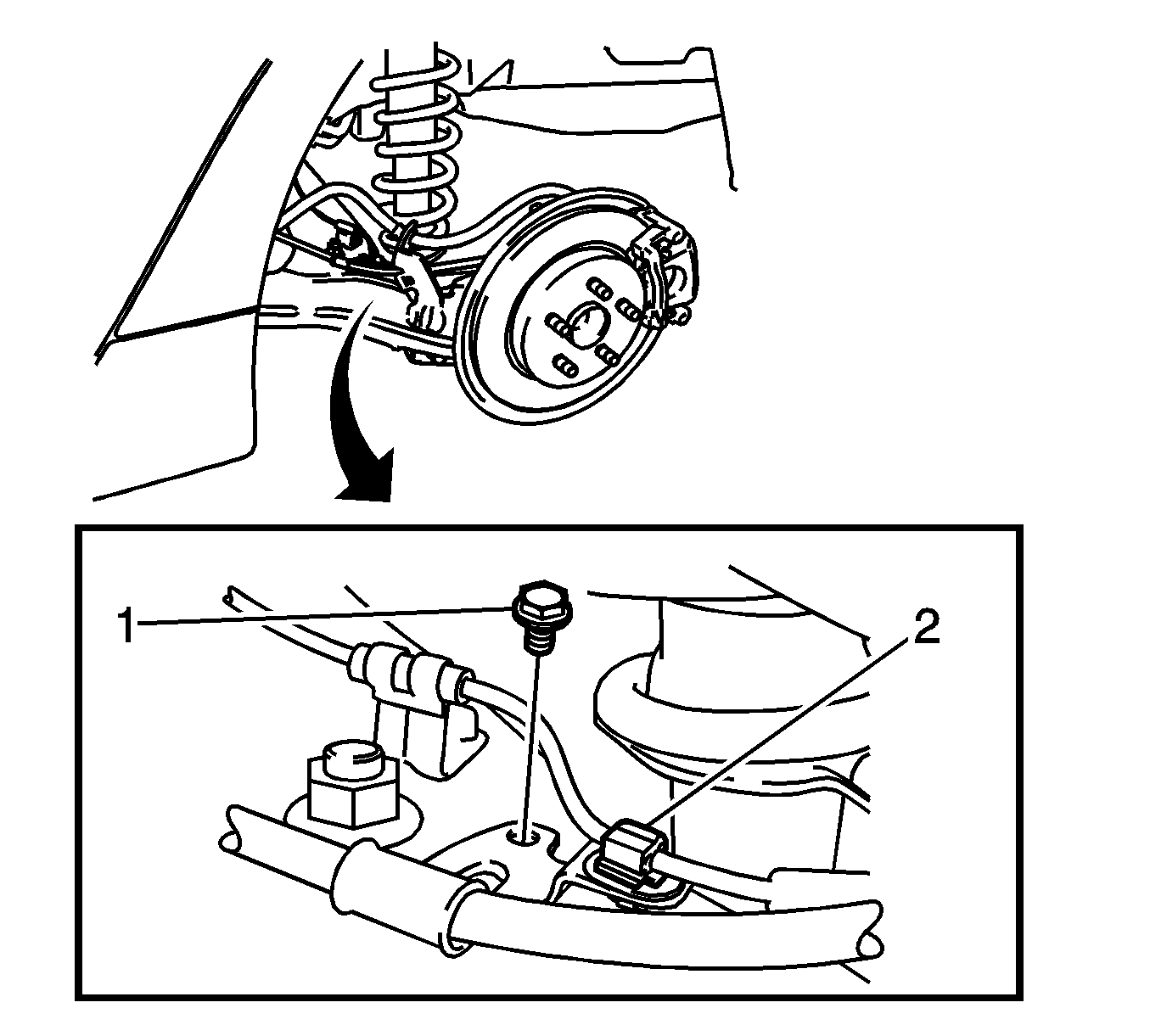
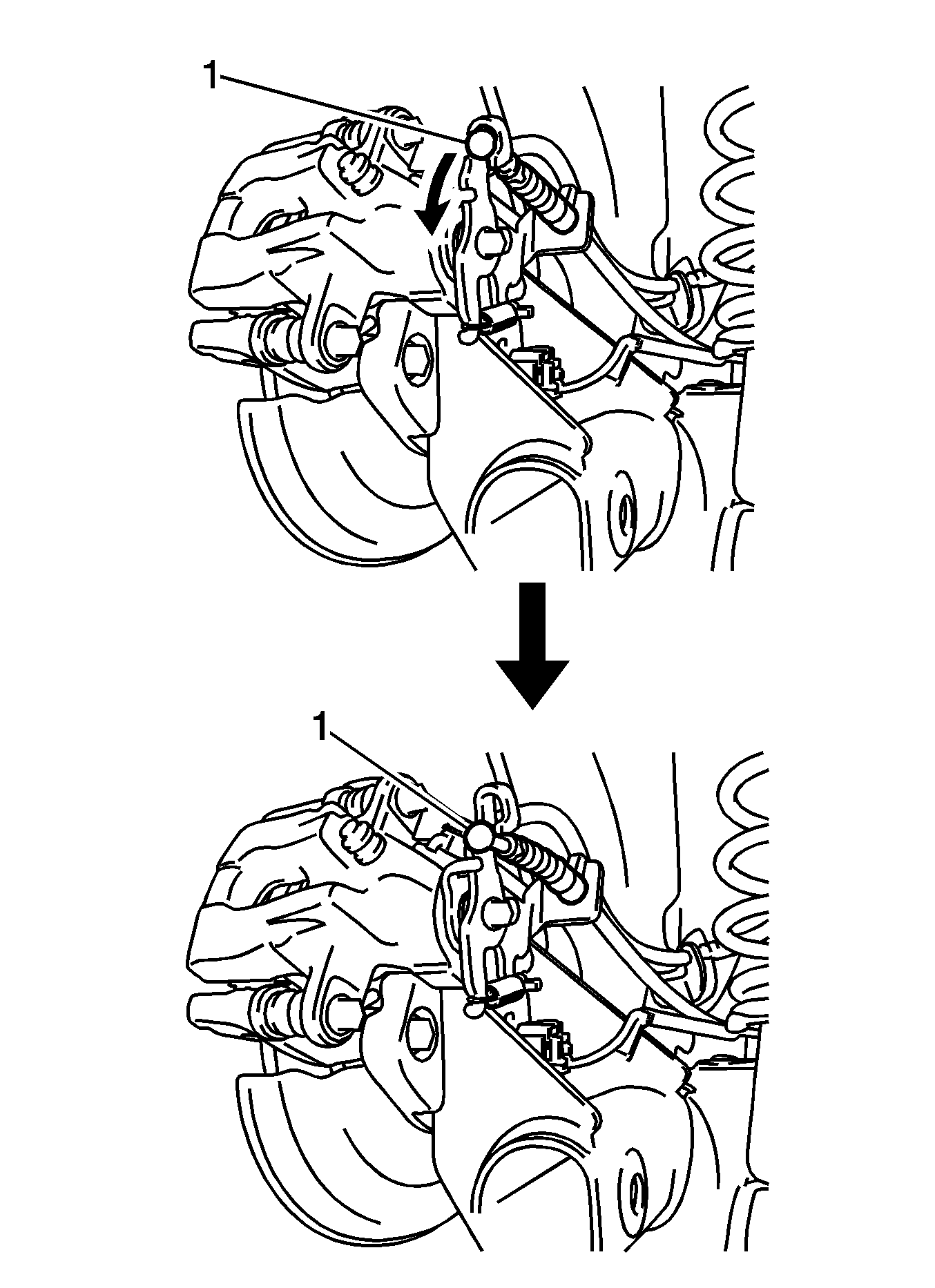
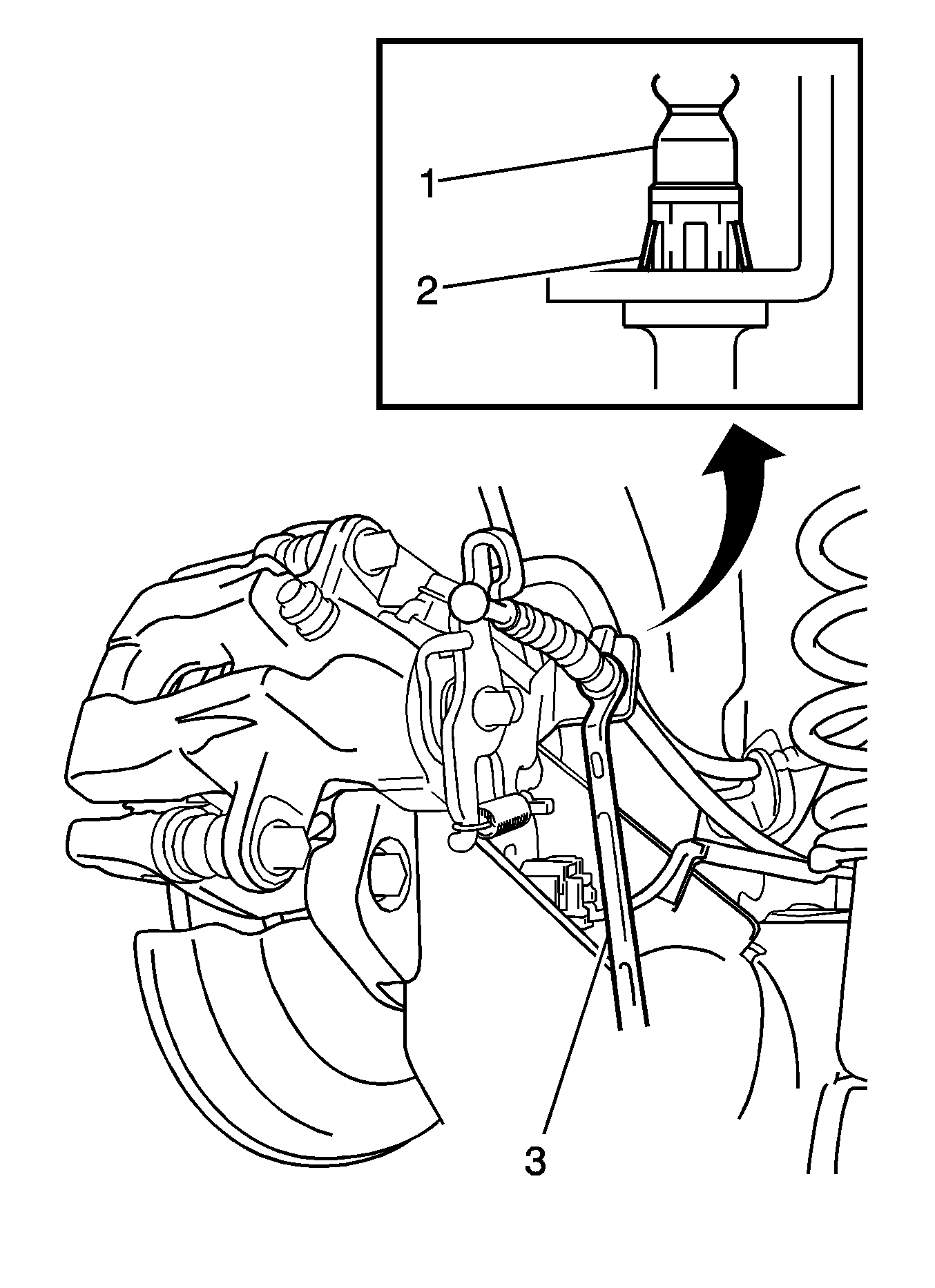
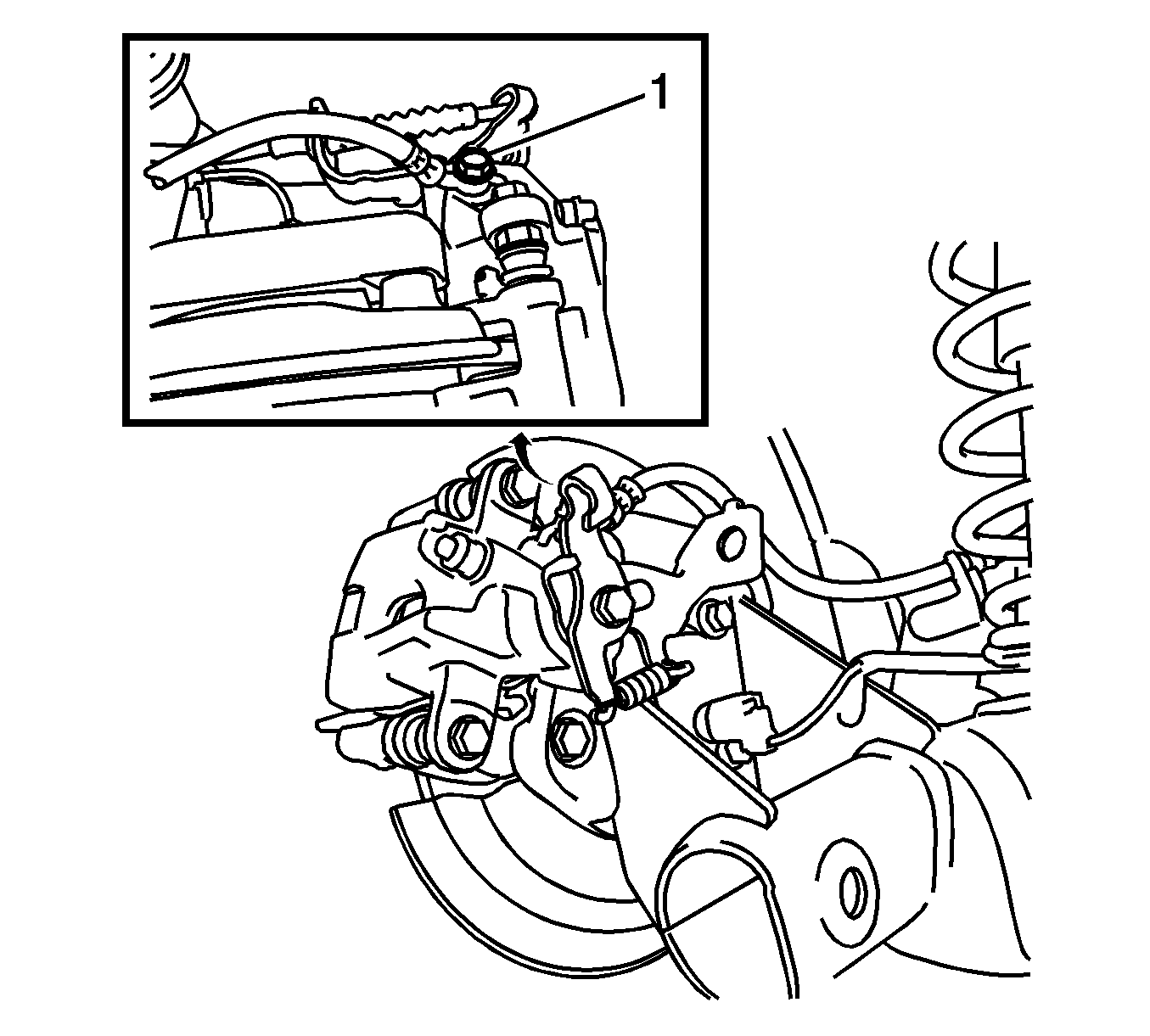
Discard the washer.
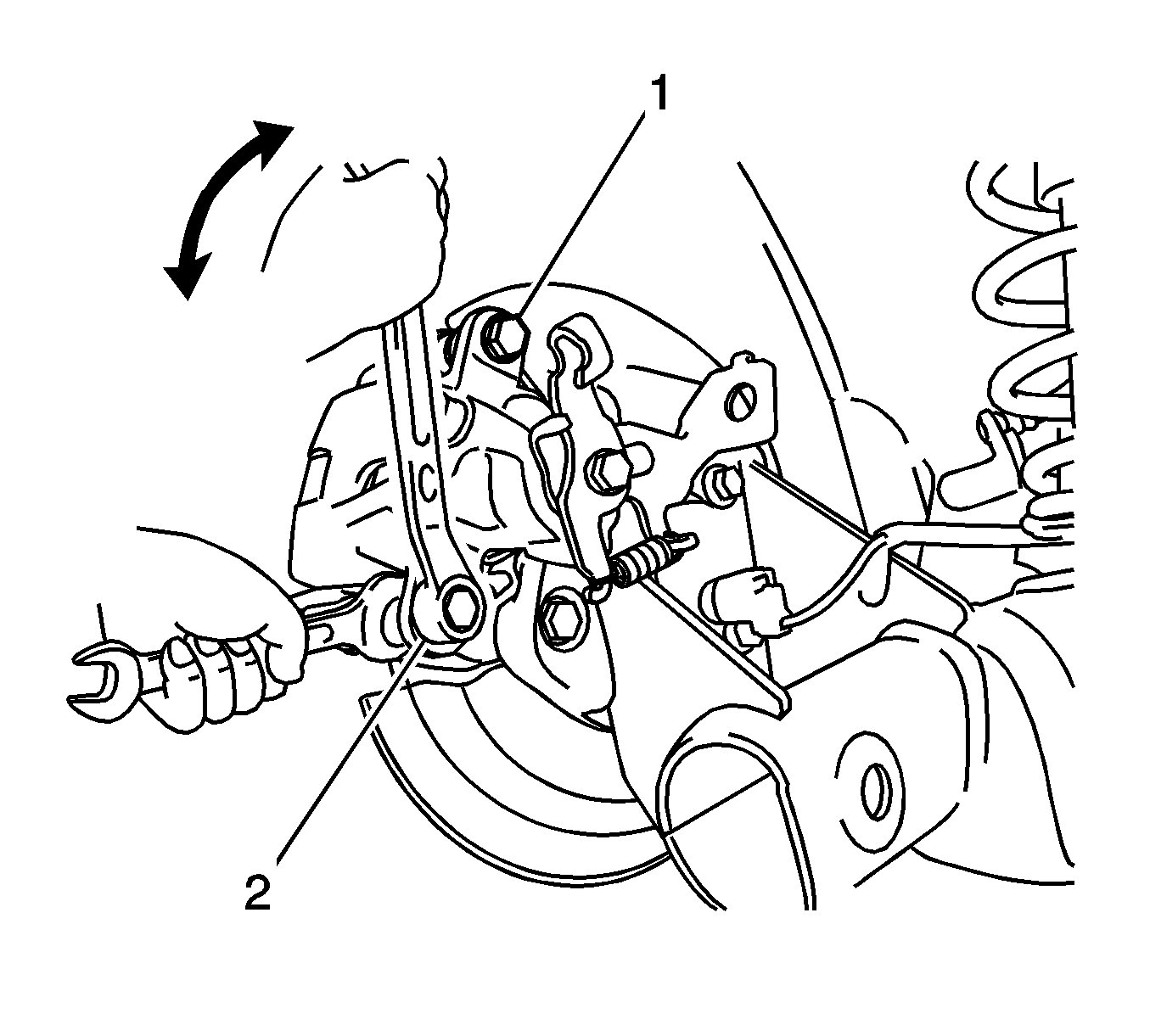
Inspection Procedure
- Clean and inspect the disc brake caliper components. Repair or replace the components as necessary. Refer to Rear Disc Brake Mounting and Hardware Inspection.
- Clean and inspect the caliper. Repair or replace the components as necessary. Refer to Brake Caliper Inspection.
Installation Procedure
- If the caliper piston is not compressed enough into the bore in order to install the caliper, use a commercially available caliper piston tool (1) in order to turn the piston in as far as possible.
- Turn the piston in order to align the piston groove 90 degrees (a) from the line between the caliper slide pin bores.
- Ensure the cylinder boot (1) is installed in the groove of the piston. If necessary, refer to Rear Brake Caliper Overhaul.
- Ensure the caliper slide pins (2, 9) are lubricated with lithium soap base glycol grease or Silicone Brake Lubricant, or equivalent. Refer to Adhesives, Fluids, Lubricants, and Sealers. If necessary, refer to Rear Disc Brake Hardware Replacement.
- Install the caliper (11) to the vehicle.
- Use a wrench in order to hold the caliper slide pins. Install the caliper bolts (1, 10) and tighten to 35 N·m (26 lb ft).
- Install a NEW washer to the flexible hose lock hole in the caliper.
- Install the brake hose to the caliper. Install the hose lock securely into the lock hole in the caliper.
- Install the brake hose fitting (1) and tighten to 29 N·m (21 lb ft).
- Install the park brake cable (1) to the caliper and engage the clip (2).
- Install the rear park brake cable (1) to the bracket on the caliper.
- Install the bolt (1) and tighten to 6 N·m (53 lb in).
- Engage the clamp (2).
- Install the park brake lever protector (1) to the rear park brake cable.
- Install the rear tire and wheel assembly. Refer to Tire and Wheel Removal and Installation.
- Lower the vehicle.
- Fill the master cylinder reservoir. Refer to Master Cylinder Reservoir Filling.
- With the engine OFF, gradually apply and release the brake pedal several times in order to position the caliper pistons and the brake pads.
- Bleed the brake system. Refer to Hydraulic Brake System Bleeding.
- Adjust the park brake system. Refer to Parking Brake Adjustment.
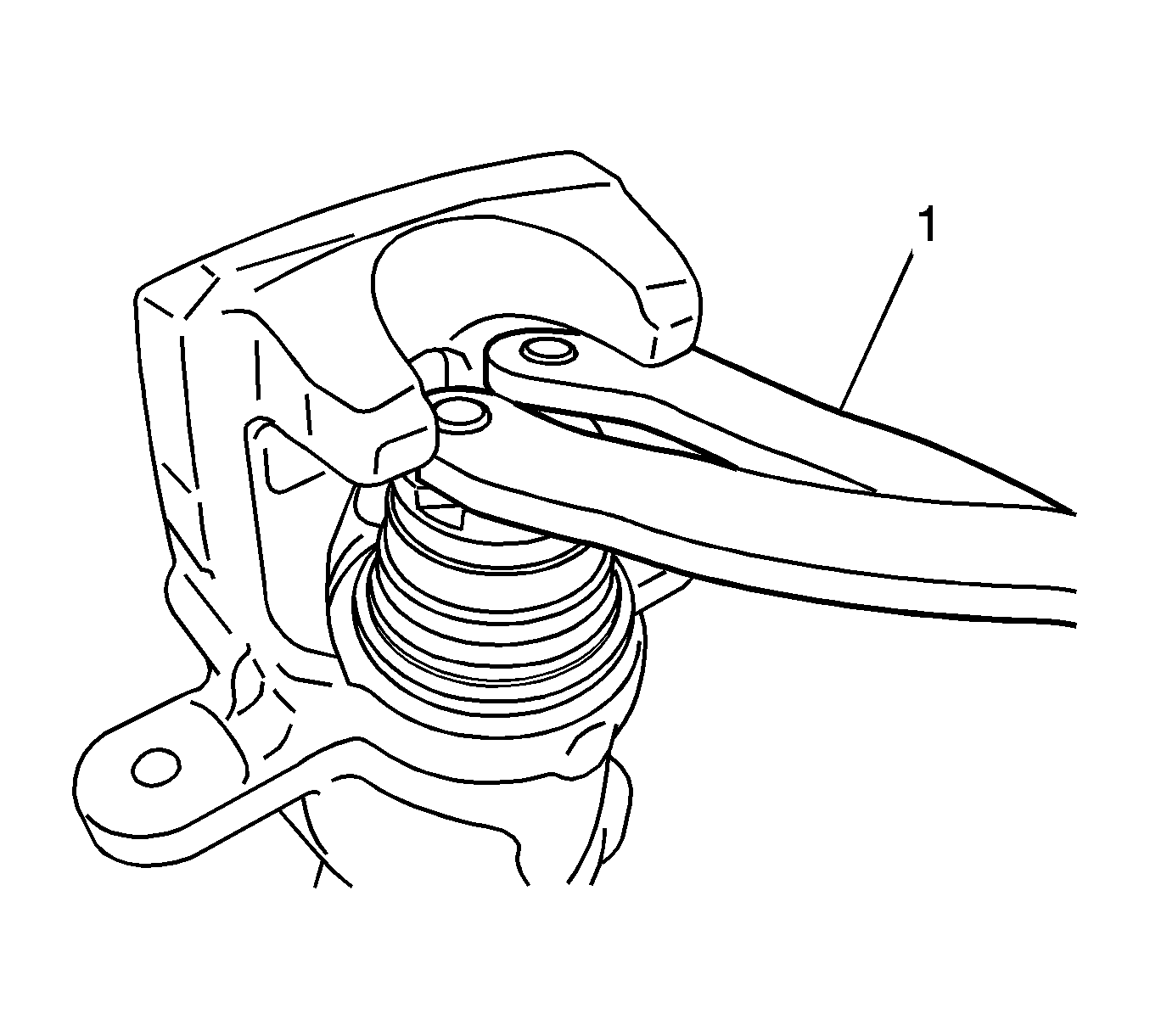
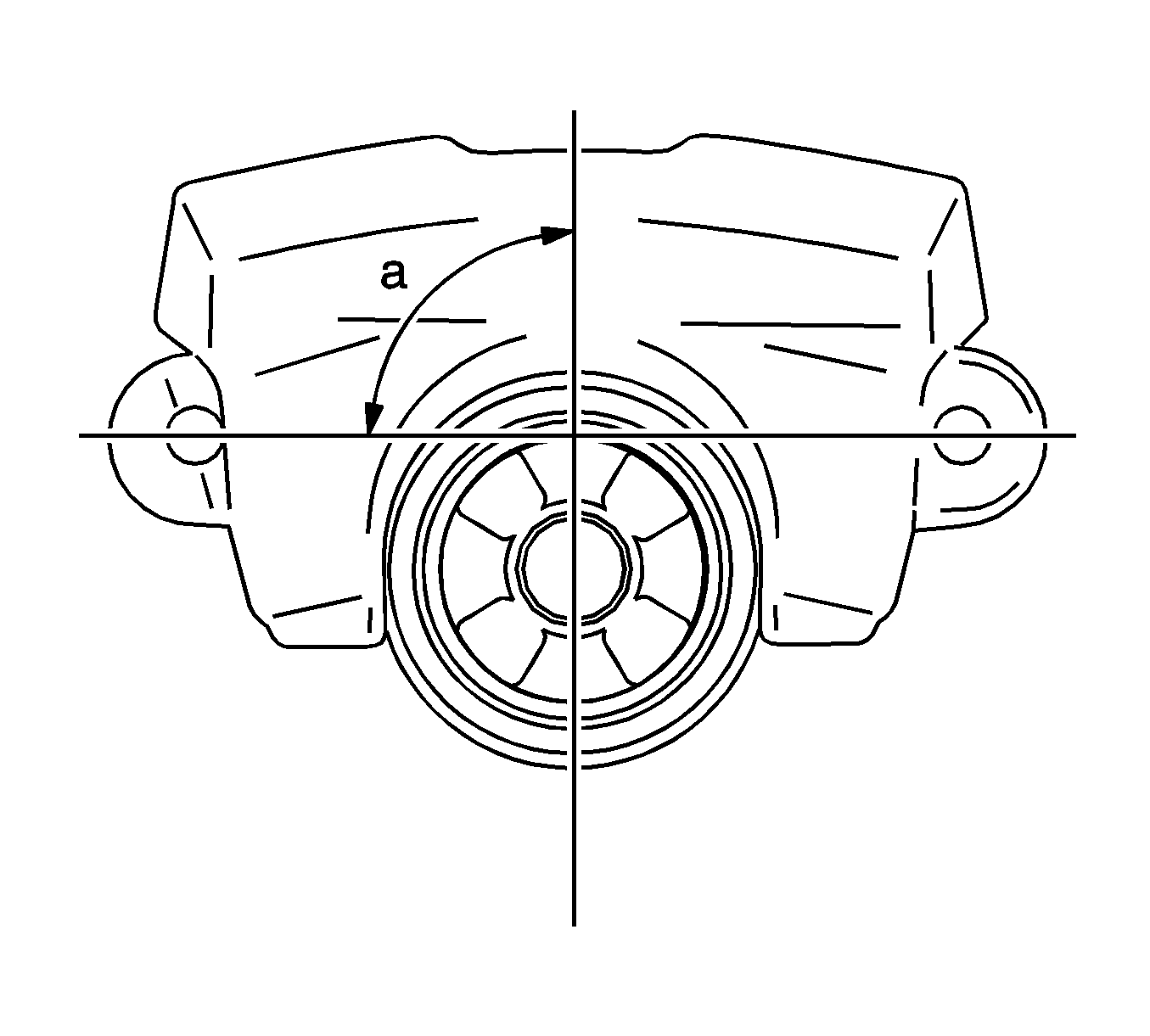
Align the piston groove with the protrusion in the brake pad.
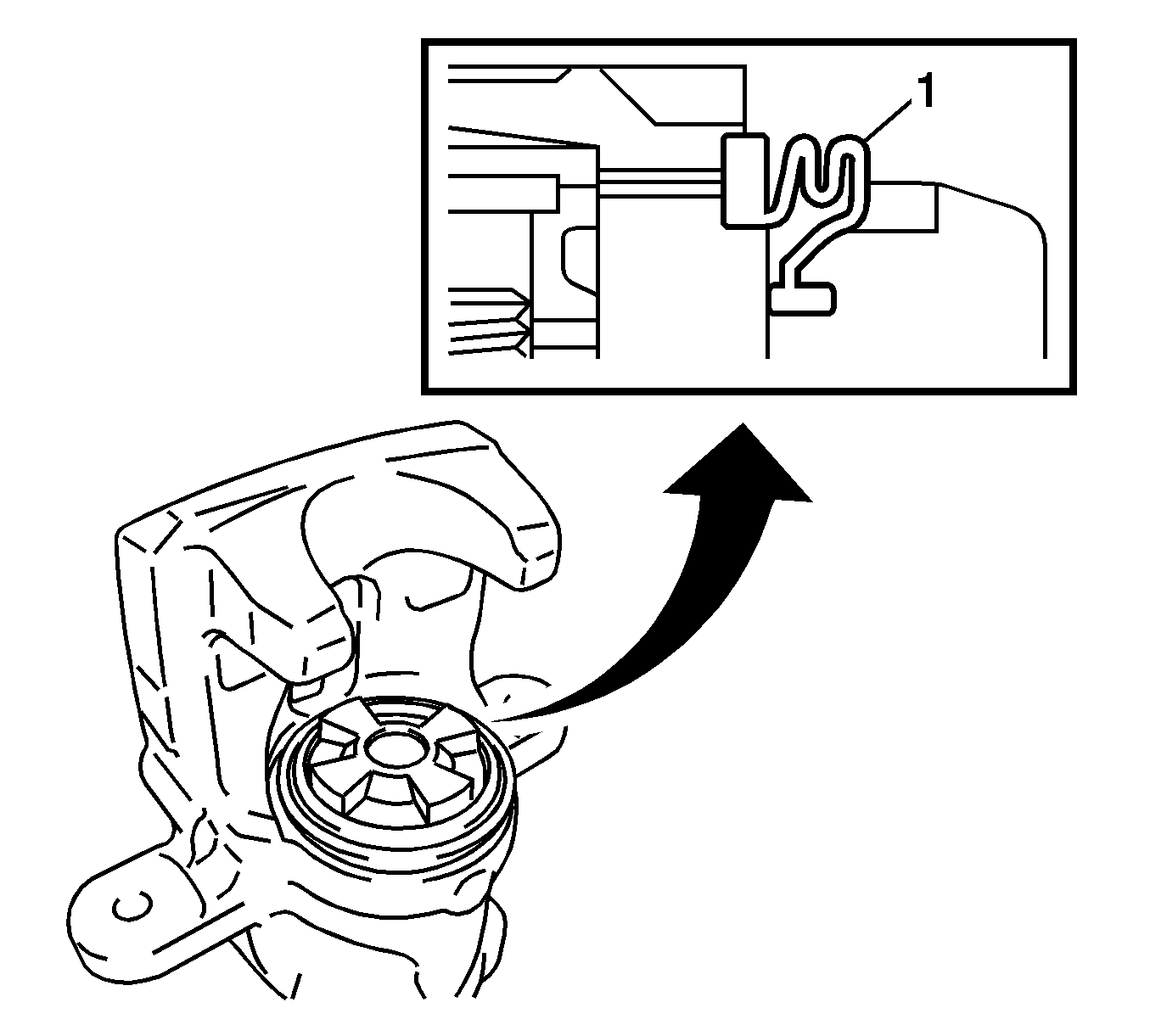
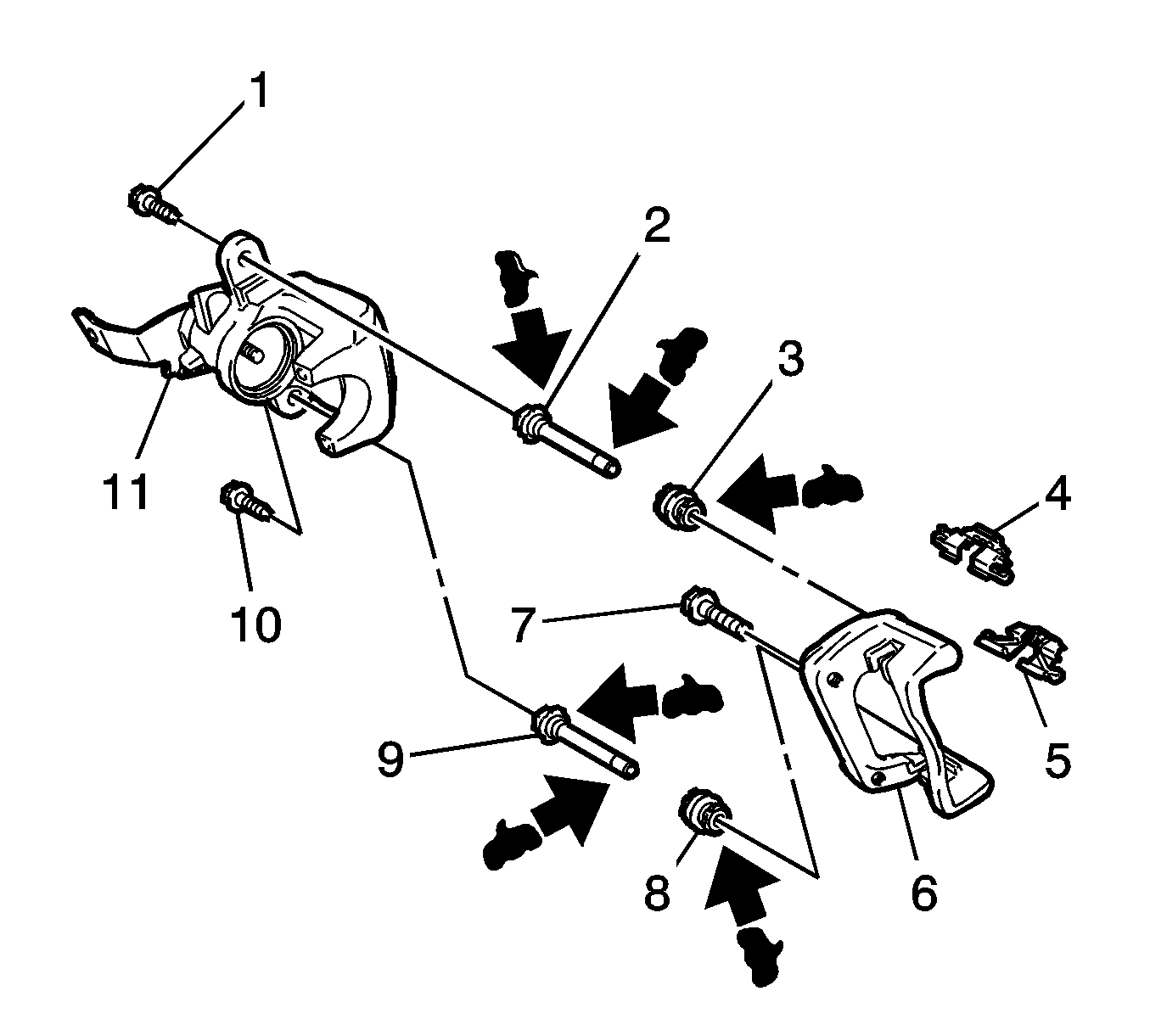
Caution: Refer to Fastener Caution in the Preface section.

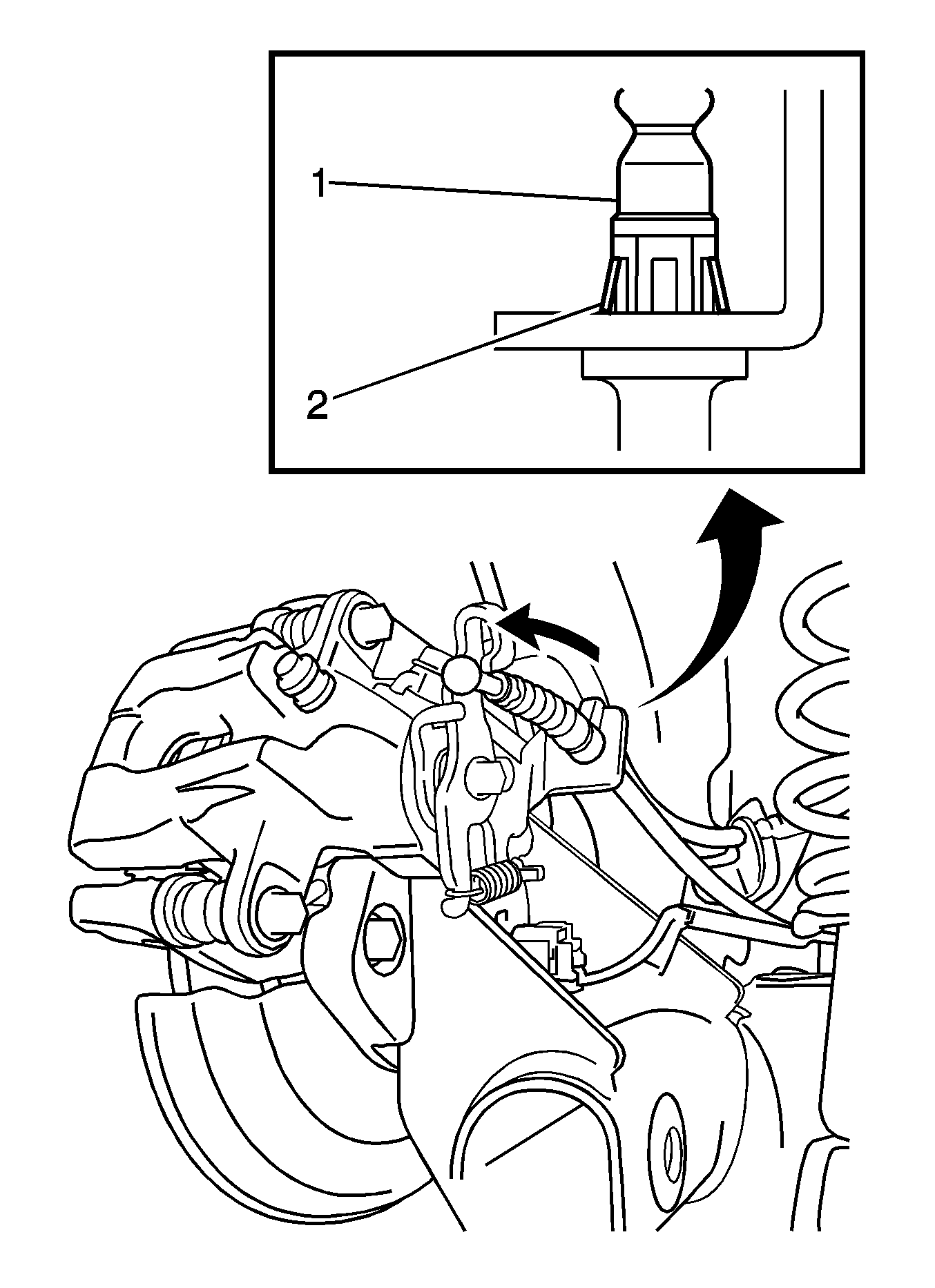
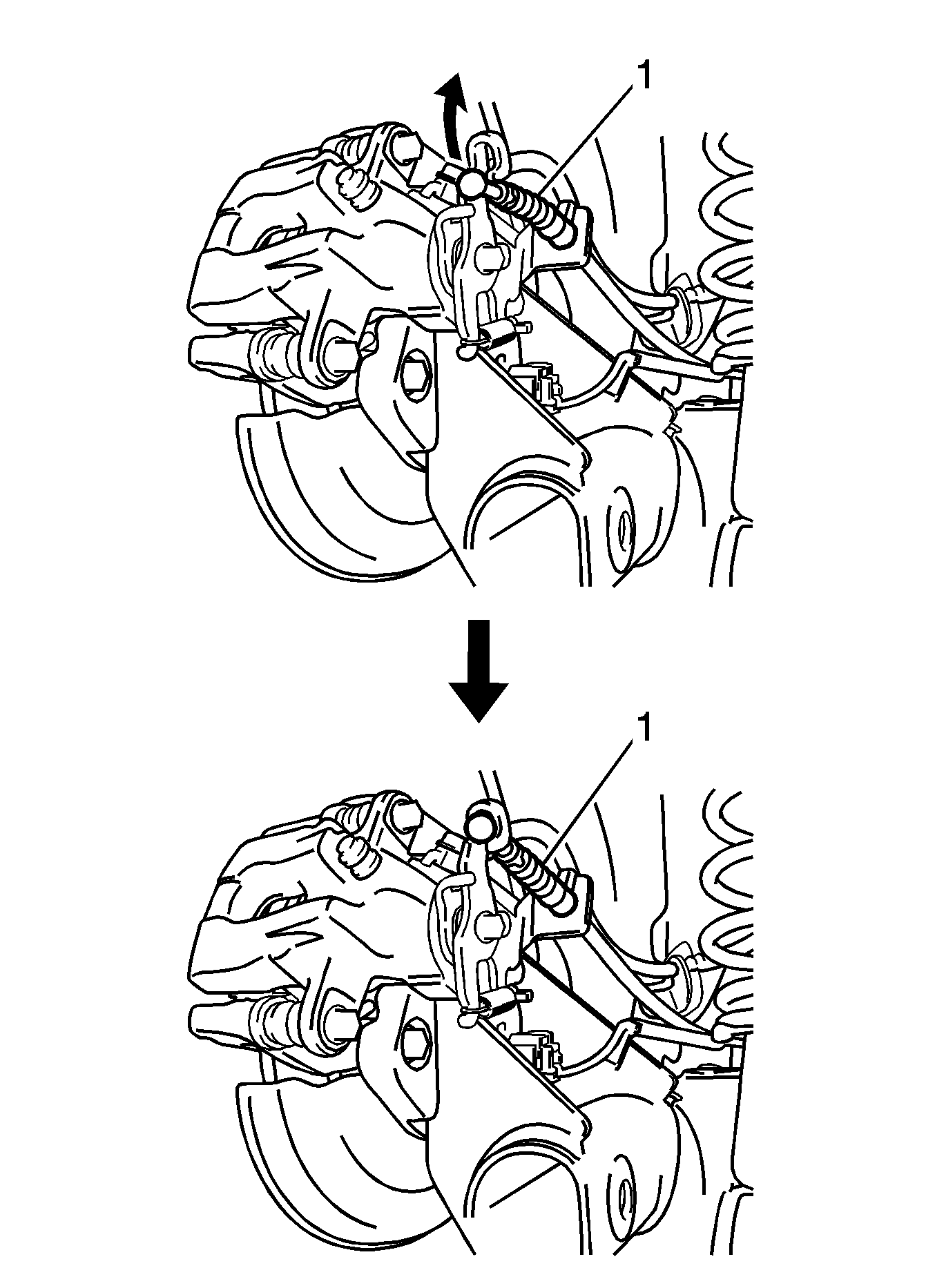


Warning: Do not move the vehicle until a firm brake pedal is obtained. Failure to obtain a firm pedal before moving vehicle may result in personal injury.
